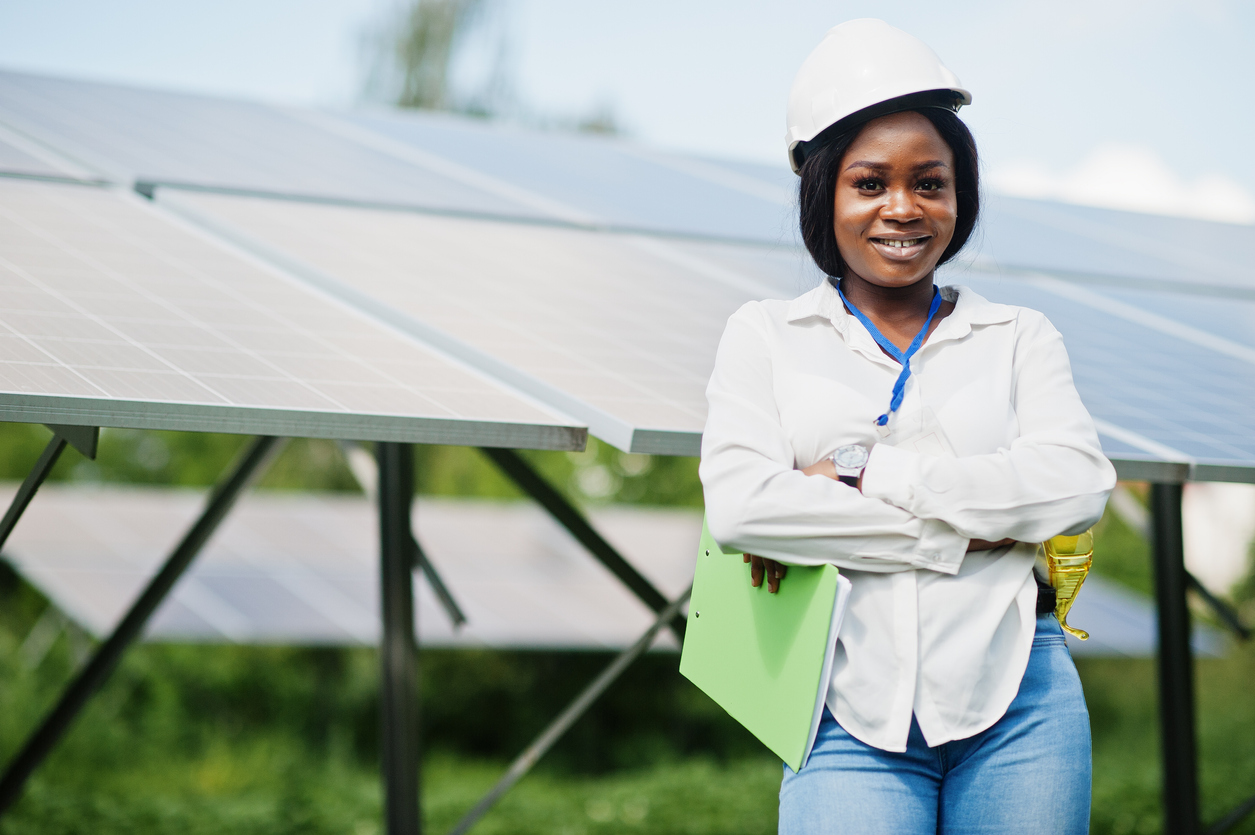Gender and Renewable Energy: Entry Points for Women’s Livelihoods and Employment

Different renewable energy sub-sectors offer benefits that can be leveraged to improve the livelihoods, employment opportunities, and lives of women, their families, and communities. They also present challenges that need to be addressed to ensure women and men benefit equitably. Renewable energy value chains for large and small-scale renewable energy sub-sectors include grid and non-grid connected infrastructure. These pose different employment and livelihood options, as well as varied constraints that need to be considered to meet women and men’s needs and interests along the renewable energy value chain – from employment to consumption.
Reduced labor and time poverty facilitates women’s and girls’ gains in education, social capital and well-being. As consumers, women may benefit from renewable energy in different ways, including reduced labor and time spent on activities such as woodfuel and water collection, as well as in food preparation and processing for which they are often responsible due to the gender division of labor. Connection to the energy grid can provide women and girls with more time to participate in educational activities or build social capital through greater interaction in the community and politics. Dependable light (including street lighting) and heat from grid-connected energy can also improve the safety, health, and well-being of women and their families (e.g., reducing gender-based violence through improved street lighting; cutting indoor and outdoor air pollution through reduced use of kerosene; improving provision of clean water through boiling).
Large-scale renewable energy infrastructure can provide women, as well as men, with employment opportunities. In many areas, women are finding work in the construction, operation or maintenance of large-scale renewable energy utilities in energy generation, transmission, or distribution. Women may also find formal or informal (intermittent or contract) employment along the energy value chain (e.g., installation; billing; meter reading; and collection). To help women enter these jobs, a number of countries are providing training, as well as supportive working environments. Women may also find indirect employment in allied industries and those that provide services for the energy sector, such as construction of large-scale renewable energy infrastructure, and services such as restaurants, catering for workers, health and social services, and temporary housing. Renewable energy can provide a broader set of livelihood options.
Women may develop or strengthen agricultural production or informal home-based enterprises, which may typically involve food production, processing and catering, or sewing and clothing repairs. Improved access to light and energy may also help them start or scale up enterprises related to computers or mobile technologies, or larger-scale food processing.
Read the full report at: gender_and_re_digital.pdf (climateinvestmentfunds.org)